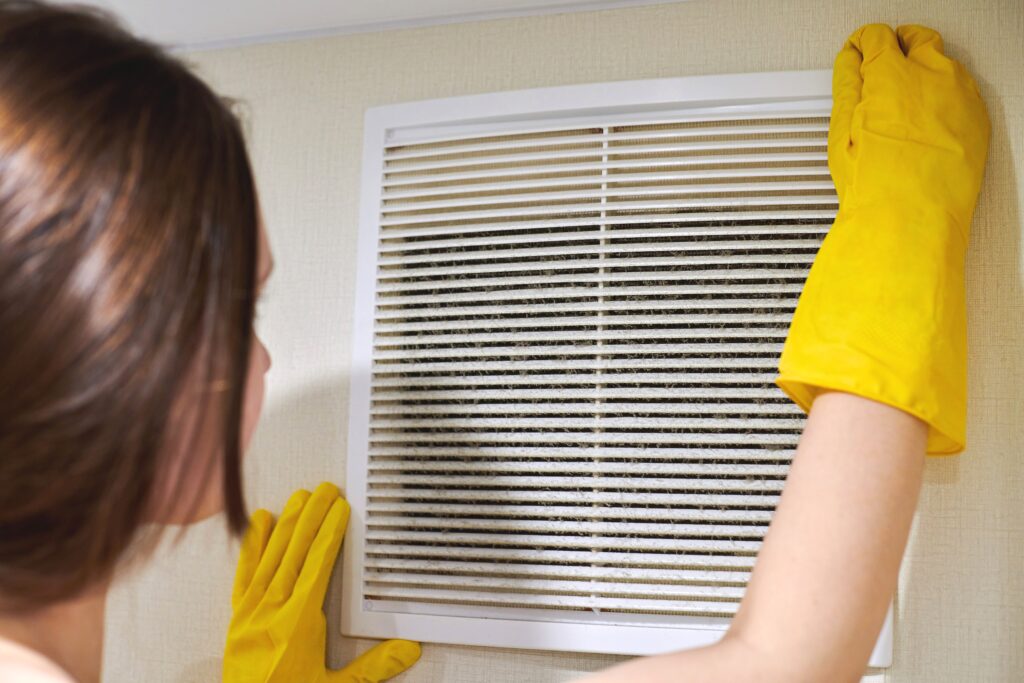A recent episode of CBS’s 60 Minutes shined a spotlight on the importance of maintaining clean indoor air, an aspect that was largely overlooked during the spread of Covid. In today’s world, preserving indoor air quality should be a high priority. According to the EPA (United States Environmental Protection Agency), Americans, on average, spend approximately 90 percent of their time indoors,1 where the concentrations of some pollutants are often 2 to 5 times higher than typical outdoor concentrations.2 With all this time spent indoors, protecting your indoor air quality is more important than ever. Indoor quality not only affects your health, but could potentially be affecting your focus and productivity as well.3
Whether you’re concerned about safeguarding your indoor air quality from wildfires or dealing with allergies, ensuring clean air is a necessity. Here are 5 common ways to preserve your indoor air quality and keep your spaces safe.
- Ventilate Your Home
- Invest in an Indoor Air Quality System
- Maintain Your HVAC System
- Clean Regularly
- Reduce Chemical Pollutants
1. Ventilate Your Home
One great way to maintain good indoor air quality is by ensuring proper ventilation in your home. Simply opening windows or doors regularly allows fresh air to circulate, replacing any stale or potentially contaminated air. However, it’s important to note that this may not always be an option for everyone. Nowadays, there are various reasons why people cannot rely on ventilation through open windows and doors. In some cases, the air quality outside is worse than indoors. As a result, this option has become less popular recently.

2. Invest in an Indoor Air Quality System
When outdoor air quality is poor due to wildfires or other pollutants, air purifiers can be another solution. They work to filter out harmful particles and chemicals and improve indoor air quality. However, when purchasing an air purifier that uses a filter to trap contaminants and control ozone output, there are a few risks to keep in mind.
Filters and filter replacements can be costly, which means most people tend to put off changing the filter until absolutely necessary- but it’s crucial to remember that delaying filter changes can actually worsen the air quality in your home. Moreover, if the filter is not working properly, you may inadvertently allow the escape of ozone into your home, which defeats the purpose of having an air purifier. So, it’s important to stay mindful of these factors when using an air purifier.
While air purifiers work to clean air that has already been contaminated, there is a new product on the market that offers a brighter future. The filter-free AURA Ion Bar™ uses linear airflow and negative air ions to block contaminants and pollutants before they enter your space, making it a more efficient and cost-effective solution. Using an Ion Bar in addition to other indoor air quality systems can help to protect and improve your indoor air quality.
If you’d like to learn more about Ion Bar and how it works, click here.
3. Maintain Your HVAC System
Regular maintenance of your heating, ventilation, and air conditioning (HVAC) system is crucial for preserving good indoor air quality. By regularly inspecting and cleaning the various parts of your HVAC system (filters, coils, and ducts), you can remove dust, allergens, and other pollutants that negatively impact the air you breathe. Making sure to regularly maintain the filters in your HVAC system is crucial. It keeps everything running smoothly and efficiently, which is very important for protecting your indoor air quality. In addition, following the manufacturer’s recommendations for filter replacement and scheduling professional tune-ups can help prevent system malfunctions and maximize energy efficiency.

4. Clean Regularly
Maintaining cleanliness in your home is essential to preserve good indoor air quality. Regular dusting, vacuuming, and cleaning of household materials like rugs, fabric furniture, and carpets can go a long way in reducing indoor pollutants and allergens. By removing things like dust mites, pet dander, and other particles, you create a healthier living environment. Keeping your home clean can also help prevent the spread of bacteria and viruses, ensuring a safer and more hygienic space for you and your loved ones.
5. Reduce Chemical Pollutants
While cleaning is a great way to keep your home safe, it is important to be aware of the cleaning products you use. Attempting to limit the use of products that emit Volatile Organic Compounds (VOCs), such as certain paints, varnishes, and cleaning supplies will help preserve indoor air quality. Instead, opt for low-VOC or eco-friendly cleaning products that are less harmful to your health and the environment. You may also wish to consider using high VOC products outdoors, if possible, to avoid introducing them into your home.
By following these five simple steps, you can significantly improve your indoor air quality. Investing in an indoor air quality system like AURA Ion Bar™, along with regular maintenance, is a great way to ensure clean and healthy indoor air.
Resources
- U.S. Environmental Protection Agency. 1989. Report to Congress on indoor air quality: Volume 2. EPA/400/1-89/001C. Washington, DC.
- Indoor Air Quality | US EPA
- U.S. Environmental Protection Agency. 2003. Indoor air quality and student performance. EPA/402/K-03/006. Washington, DC.
- Indoor air systems crucial to curbing spread of viruses, aerosol researchers say – CBS News
- AURA Ion Bar | AURA Ion Bar™
- The Power of Negative Ions | AURA Ion Bar™
- Introducing: AURA Ion Bar™ | AURA Ion Bar™
- What are volatile organic compounds (VOCs)? | US EPA
